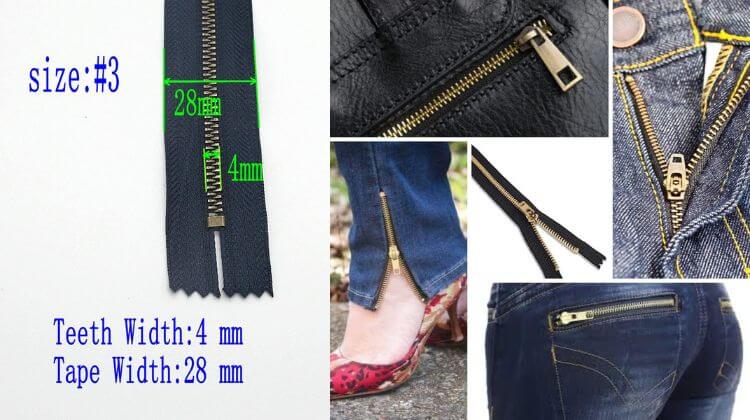As an Amazon Associate, I earn from qualifying purchases.

When it comes to wardrobe staples, jeans are a timeless classic. They are versatile, comfortable, and can be dressed up or down for any occasion. However, like any other clothing item, jeans have a lifespan. This article will look at the aspects that influence how long jeans last and provide tips on extending their durability. So, please get yourself a cup of coffee, and let’s dive into the fascinating world of denim!
Understanding Denim Fabric
Denim is a sturdy cotton fabric woven in a twill pattern, making it durable and resistant to tearing. It is commonly used for making jeans due to its strength and versatility. Denim can be made from different yarn weights, affecting its durability and lifespan. Heavier denim, such as 14-ounce or 16-ounce, is generally more durable and long-lasting than lightweight denim.
How Long Do Jeans Last?
Jeans, when well-maintained, can last for a remarkably long time. The durability of jeans depends on various factors, including the quality of the denim, the construction, the frequency of wear, and the care taken during laundering. On average, a pair of jeans can last anywhere from 1 to 10 years, but this estimate can vary significantly based on individual usage and maintenance habits.
How Long Should Jeans Last
Factors Affecting the Lifespan of Jeans
Quality of Fabric
The fabric’s quality plays a crucial role in determining how long jeans last. High-quality denim is tightly woven, making it more wear- and tear-resistant. Look for jeans made from 100% cotton or a blend with a small percentage of elastane for added stretch. Avoid jeans made from low-quality or thin denim, as they are more prone to damage.
Construction and Stitching
The way jeans are constructed and stitched also affects their durability. Attention to details like reinforced stitching, double-stitched seams, and sturdy hardware like metal rivets. These features ensure that the jeans can withstand regular wear and frequent washing without falling apart.
Washing and Care
Proper washing and care practices significantly impact the lifespan of jeans. Always follow the manufacturer’s instructions for washing, which often recommend turning the jeans inside out, using cold water, and avoiding harsh detergents. Overwashing and exposing jeans to excessive heat, such as tumble drying, can cause fading, shrinkage, and fabric damage. Instead, opt for spot cleaning when possible and only wash jeans when necessary.
Frequency of Wear
The more frequently you wear your jeans, the faster they show signs of wear and tear. Rotating your jeans with other pairs and giving them a break between wears allows the fabric to relax and recover. If you have multiple pairs of jeans, it’s a good idea to alternate them to extend their lifespan.
Body Type and Fit
The fit of jeans and the wearer’s body type can also impact their longevity. Tight-fitting jeans put more stress on the fabric, especially in areas like the thighs and knees, which may lead to faster wear. Opt for jeans with a comfortable fit that allows for movement without excessive strain on the fabric.
Signs of Wear and Tear
Over time, jeans will naturally show signs of wear and tear. Some common indicators that your jeans are reaching the end of their lifespan include:
- Thin or frayed fabric in high-stress areas (knees, seat, pockets)
- Noticeable fading and loss of color
- Holes or rips that cannot be easily repaired
- Excessive stretching or sagging in the fabric
- Loose or broken stitching
Tips to Extend the Lifespan of Jeans
- Limit washing: Avoid washing jeans too frequently. Spot clean minor stains and only wash them when necessary to preserve the fabric and color.
- Use gentle detergents: Opt for mild detergents specifically designed for dark or colored fabrics to prevent fading and damage.
- Air-dry jeans: Hang jeans to air dry instead of using a dryer to prevent shrinkage and maintain their shape.
- Rotate your jeans: Owning multiple pairs of jeans and rotating them regularly can distribute the wear, extending their overall lifespan.
- Store them properly: When not in use, fold jeans neatly or hang them to prevent creasing and unnecessary stress on the fabric.
When to Replace Jeans
Despite your efforts to extend their lifespan, jeans will eventually wear out. The exact duration varies depending on several factors, such as wear frequency and the jeans’ quality. If your jeans exhibit significant signs of wear, such as large holes, thinning fabric, or extensive fading, it’s time to consider replacing them.
Conclusion: How Long Do Jeans Last
Jeans can last for a considerable period of time if chosen wisely and cared for properly. The quality of the fabric, construction, and stitching are vital factors in determining their durability. By following recommended care practices and being mindful of signs of wear and tear, you can enjoy your favorite pair of jeans for an extended period of time. Remember to explore sustainable options and consider the environmental impact of your choices. Invest in high-quality jeans, which will become a reliable wardrobe staple for years.





